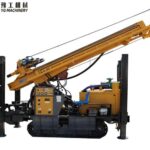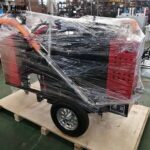Glass vacuum lifting equipment refers to machinery designed to lift, transport, and position glass panels or other smooth-surfaced materials using vacuum suction technology. These systems utilize vacuum pumps or generators to create negative pressure, enabling suction cups (vacuum pads) to securely adhere to the surface of the glass. Once attached, the equipment allows operators to maneuver heavy or oversized glass panels with minimal physical effort, reducing the risk of accidents and material damage.
Components of Glass Vacuum Lifting Equipment
Vacuum Pads: High-quality rubber or polyurethane pads that form an airtight seal on the glass surface.
Vacuum Pump: Generates and maintains the vacuum pressure required for lifting.
Lifting Frame or Beam: A structural component that distributes the load evenly across multiple pads.
Control System: Manual or automated interfaces for adjusting suction, tilt, and lifting speed.
Common Applications of Glass Vacuum Lifting Machine
Thanks to their versatility and reliability, glass vacuum lifting equipment is used across a broad spectrum of industries. Here are some typical use cases:
Construction Industry: The most common application is in the installation of glass façades, windows, and curtain walls on buildings. Vacuum lifters make it easy to install panels at height with minimal risk.
Manufacturing Plants: In glass processing facilities, vacuum lifting equipment is used to transfer glass sheets from one machine to another, aiding in processes like cutting, coating, and tempering.
Automotive Industry: Some car manufacturers use suction lifters to handle automotive glass like windshields and rear windows during assembly.
Logistics and Warehousing: Glass panels need to be safely moved and stored, and vacuum lifters are used to load and unload containers with precision.
Solar Energy Sector: The equipment is also used in the manufacturing and installation of solar panels, which require careful handling due to their fragile nature.
How to Choose the Right Glass Vacuum Lift Equipment?
Weight Capacity: Always choose a model that can handle more than the maximum expected load to maintain safety margins.
Panel Size and Shape: Some lifters are better suited for oversized or irregularly shaped glass. Ensure the suction pads and frame can accommodate your specific needs.
Usage Environment: Consider whether the equipment will be used indoors or outdoors, on construction sites or in controlled factory settings.
Power Source: Evaluate whether electricity, batteries, or compressed air is more suitable for your site.
Mounting Compatibility: Ensure the lifter is compatible with your existing cranes or hoists.




